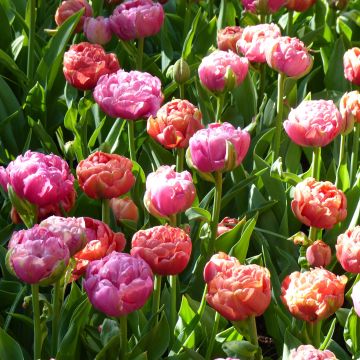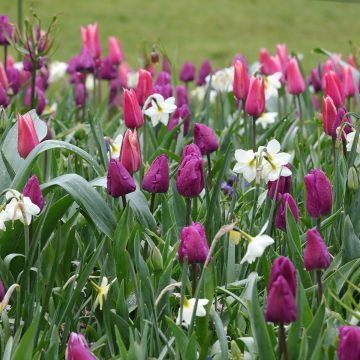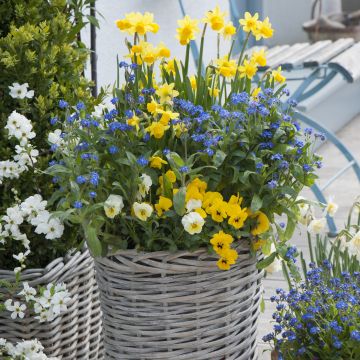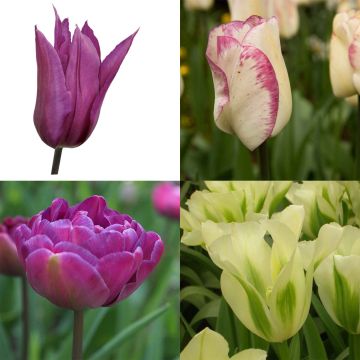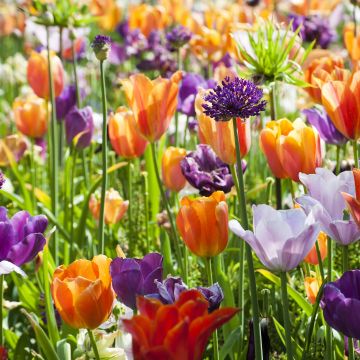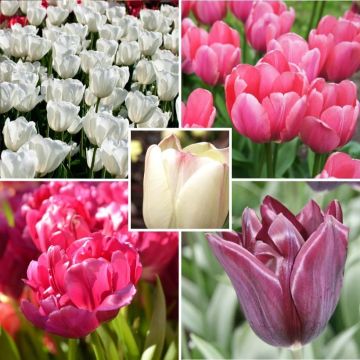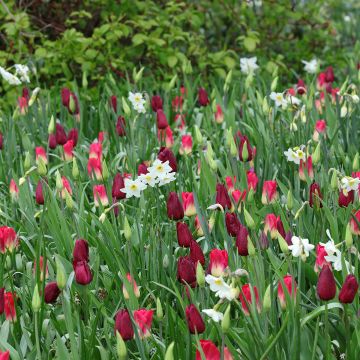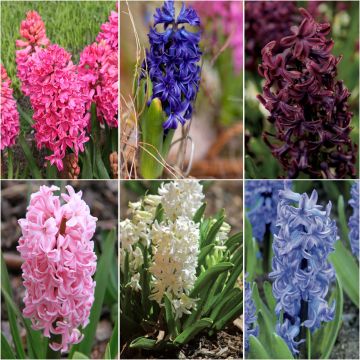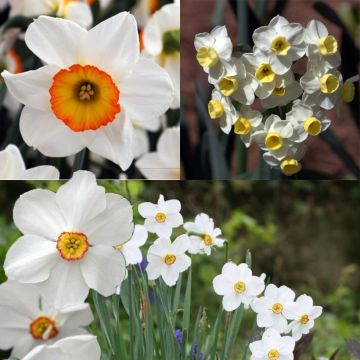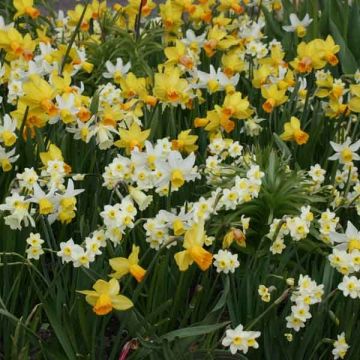Shipping country and language
Your country of residence may be:
Your country of residence is:
For a better user experience on our website, you can select:
Your shipping country:
Andorra
Austria
Belgium
Bulgaria
Canada
Chile
Croatia
Cyprus
Czechia
Denmark
Estonia
Finland
France
Germany
Greece
Hungary
Iceland
Ireland
Italy
Latvia
Lithuania
Luxembourg
Malta
Monaco
Netherlands
Poland
Portugal
Romania
Slovakia
Slovenia
Spain
Sweden
Switzerland
United Kingdom
We only deliver seed and bulb products to your country. If you add other products to your basket, they cannot be shipped.
Language:
French
German
Spanish
English
My Account
Hello
My wish lists
Plantfit
Log in / Register
Existing customer?
New customer?
Create an account to track your orders, access our customer service and, if you wish, make the most of our upcoming offers.
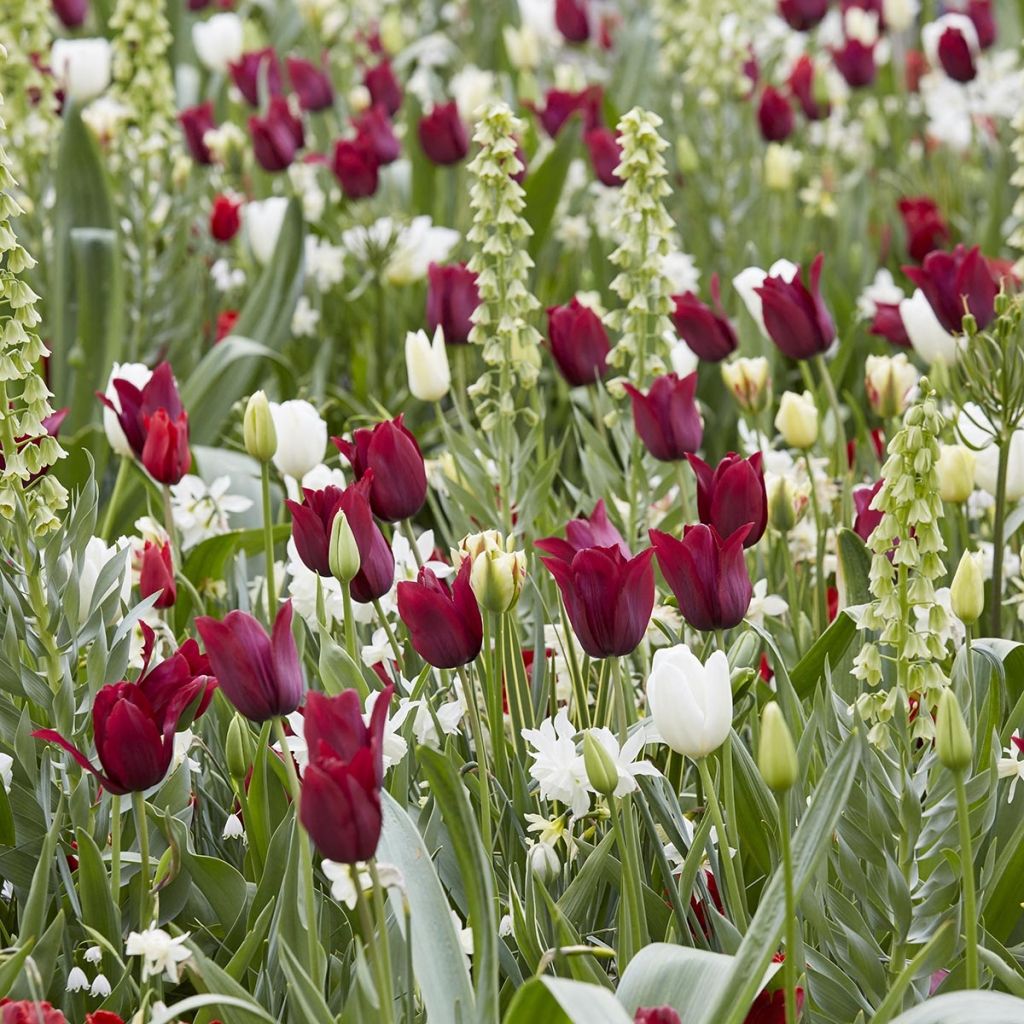

Ruby and Diamond Collection
Ruby and Diamond Collection
Order in the next for dispatch today!
Dispatch by letter from €3.90.
Delivery charge from €5.90 Oversize package delivery charge from €6.90.
More information
This item is not available in your country.
Schedule delivery date,
and select date in basket
This plant carries a 6 months recovery warranty
More information
We guarantee the quality of our plants for a full growing cycle, and will replace at our expense any plant that fails to recover under normal climatic and planting conditions.
From €5.90 for pickup delivery and €6.90 for home delivery
Express home delivery from €8.90.
Does this plant fit my garden?
Set up your Plantfit profile →
Collection items (31 plants)
Description
Here is a collection of spring bulbs to change from the common varieties. In April-May, the sublime floral stems of the fritillary mix with the candid and fragrant white narcissus flowers, and the perfectly shaped white tulip. The dark red tulip adds elegance and liveliness to the ensemble.
This collection consists of 4 bulb varieties:
- Fritillaria persica 'Ivory Bells' with tall floral stems of 70-80 cm (28-32in) in height, adorned with bell-shaped flowers in ivory-green veiled with silver, bright, pleasantly scented, and very long-lasting.
- Triumph 'Jan Reus' Tulip, majestic with its narrow Bordeaux red corolla carried by a 45 cm (18in) stem.
- Triumph 'White Dream' Tulip, with a narrow pure white flower on a 40 cm (16in) stem.
- Narcissus 'Mount Hood' with large white flowers, open on a wide trumpet barely tinted with yellow-green at blooming. Height: 45 cm (18in).
Individually labeled.
You can create beautiful pots with this collection. The bulbs can also be planted in a sunny flower bed, in any rich and well-drained soil.
Plant habit
Flowering
Foliage
Botanical data
Liliaceae, Amaryllidaceae
Cultivar or hybrid
Other Spring bulb collection
Planting and care
Plant your bulbs as soon as possible in a sufficiently well-drained soil. Loosen the soil deeply.
For tulips: plant at a depth of 15 cm (6in) (Bulbs should be covered with twice their height of soil). Space the bulbs a few cm apart, making sure they do not touch. Choose a sunny location for better flowering. After flowering, cut the flower stems and let the leaves dry completely before cutting them.
For Fritillaries: they thrive in full sun. They need light, but not necessarily direct sunlight. Plant them in fertile and well-drained soil. Avoid soil that is too acidic and heavy: if drainage is insufficient, the fritillary may rot, both in winter and summer. Add sand, gravel, or pumice to the planting hole and plant in a raised bed (25 cm (10in) of elevation is sufficient). Place the bulb at a depth of 20 cm (8in), slightly tilting it so that its center does not collect rainwater. In winter, we recommend mulching the fritillary, not only to protect it from the cold, but especially from excessive humidity. Remove faded flowers if you do not want them to self-seed. Do not water your fritillaries in summer and winter. If the soil is too dry in spring, water lightly to start the bulb, but always without excess.
For daffodils: they tolerate both the shade of an understory and a sunny flowerbed, and can adapt to any good garden soil. Plant them at a depth of 10 cm (4in) and spaced 10 cm (4in) apart. It is necessary to let the leaves of the daffodils wither before cutting them. This is when the bulb rebuilds itself and prepares the flowers for the following year. However, remember to cut the flowers as soon as they have faded to prevent seed formation. This would unnecessarily deplete the bulb.
Planting period
Intended location
Care
This item has not been reviewed yet - be the first to leave a review about it.
Haven't found what you were looking for?
Hardiness is the lowest winter temperature a plant can endure without suffering serious damage or even dying. However, hardiness is affected by location (a sheltered area, such as a patio), protection (winter cover) and soil type (hardiness is improved by well-drained soil).

Photo Sharing Terms & Conditions
In order to encourage gardeners to interact and share their experiences, Promesse de fleurs offers various media enabling content to be uploaded onto its Site - in particular via the ‘Photo sharing’ module.
The User agrees to refrain from:
- Posting any content that is illegal, prejudicial, insulting, racist, inciteful to hatred, revisionist, contrary to public decency, that infringes on privacy or on the privacy rights of third parties, in particular the publicity rights of persons and goods, intellectual property rights, or the right to privacy.
- Submitting content on behalf of a third party;
- Impersonate the identity of a third party and/or publish any personal information about a third party;
In general, the User undertakes to refrain from any unethical behaviour.
All Content (in particular text, comments, files, images, photos, videos, creative works, etc.), which may be subject to property or intellectual property rights, image or other private rights, shall remain the property of the User, subject to the limited rights granted by the terms of the licence granted by Promesse de fleurs as stated below. Users are at liberty to publish or not to publish such Content on the Site, notably via the ‘Photo Sharing’ facility, and accept that this Content shall be made public and freely accessible, notably on the Internet.
Users further acknowledge, undertake to have ,and guarantee that they hold all necessary rights and permissions to publish such material on the Site, in particular with regard to the legislation in force pertaining to any privacy, property, intellectual property, image, or contractual rights, or rights of any other nature. By publishing such Content on the Site, Users acknowledge accepting full liability as publishers of the Content within the meaning of the law, and grant Promesse de fleurs, free of charge, an inclusive, worldwide licence for the said Content for the entire duration of its publication, including all reproduction, representation, up/downloading, displaying, performing, transmission, and storage rights.
Users also grant permission for their name to be linked to the Content and accept that this link may not always be made available.
By engaging in posting material, Users consent to their Content becoming automatically accessible on the Internet, in particular on other sites and/or blogs and/or web pages of the Promesse de fleurs site, including in particular social pages and the Promesse de fleurs catalogue.
Users may secure the removal of entrusted content free of charge by issuing a simple request via our contact form.
The flowering period indicated on our website applies to countries and regions located in USDA zone 8 (France, the United Kingdom, Ireland, the Netherlands, etc.)
It will vary according to where you live:
- In zones 9 to 10 (Italy, Spain, Greece, etc.), flowering will occur about 2 to 4 weeks earlier.
- In zones 6 to 7 (Germany, Poland, Slovenia, and lower mountainous regions), flowering will be delayed by 2 to 3 weeks.
- In zone 5 (Central Europe, Scandinavia), blooming will be delayed by 3 to 5 weeks.
In temperate climates, pruning of spring-flowering shrubs (forsythia, spireas, etc.) should be done just after flowering.
Pruning of summer-flowering shrubs (Indian Lilac, Perovskia, etc.) can be done in winter or spring.
In cold regions as well as with frost-sensitive plants, avoid pruning too early when severe frosts may still occur.
The planting period indicated on our website applies to countries and regions located in USDA zone 8 (France, United Kingdom, Ireland, Netherlands).
It will vary according to where you live:
- In Mediterranean zones (Marseille, Madrid, Milan, etc.), autumn and winter are the best planting periods.
- In continental zones (Strasbourg, Munich, Vienna, etc.), delay planting by 2 to 3 weeks in spring and bring it forward by 2 to 4 weeks in autumn.
- In mountainous regions (the Alps, Pyrenees, Carpathians, etc.), it is best to plant in late spring (May-June) or late summer (August-September).
The harvesting period indicated on our website applies to countries and regions in USDA zone 8 (France, England, Ireland, the Netherlands).
In colder areas (Scandinavia, Poland, Austria...) fruit and vegetable harvests are likely to be delayed by 3-4 weeks.
In warmer areas (Italy, Spain, Greece, etc.), harvesting will probably take place earlier, depending on weather conditions.
The sowing periods indicated on our website apply to countries and regions within USDA Zone 8 (France, UK, Ireland, Netherlands).
In colder areas (Scandinavia, Poland, Austria...), delay any outdoor sowing by 3-4 weeks, or sow under glass.
In warmer climes (Italy, Spain, Greece, etc.), bring outdoor sowing forward by a few weeks.




